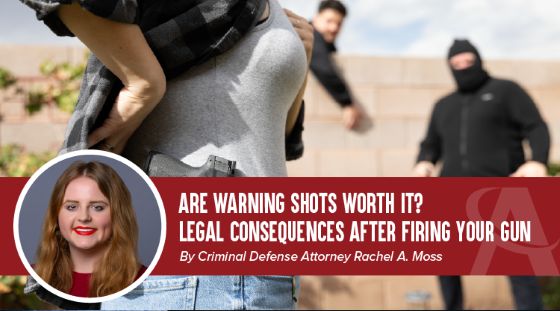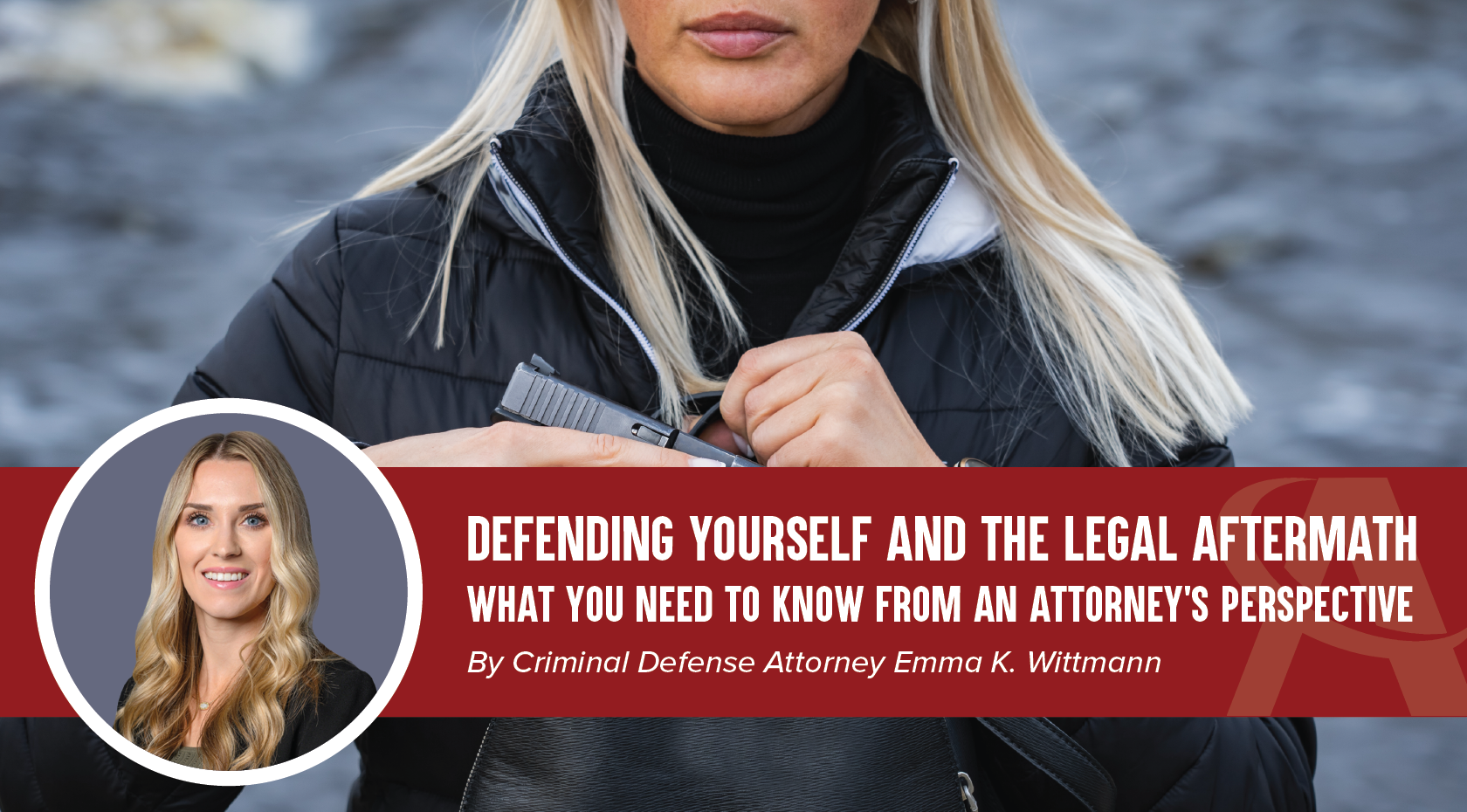Defensive Display or Brandishing: Is It in the Eye of the Beholder?
By. Attorney Joey N. Hamby
October 15, 2025
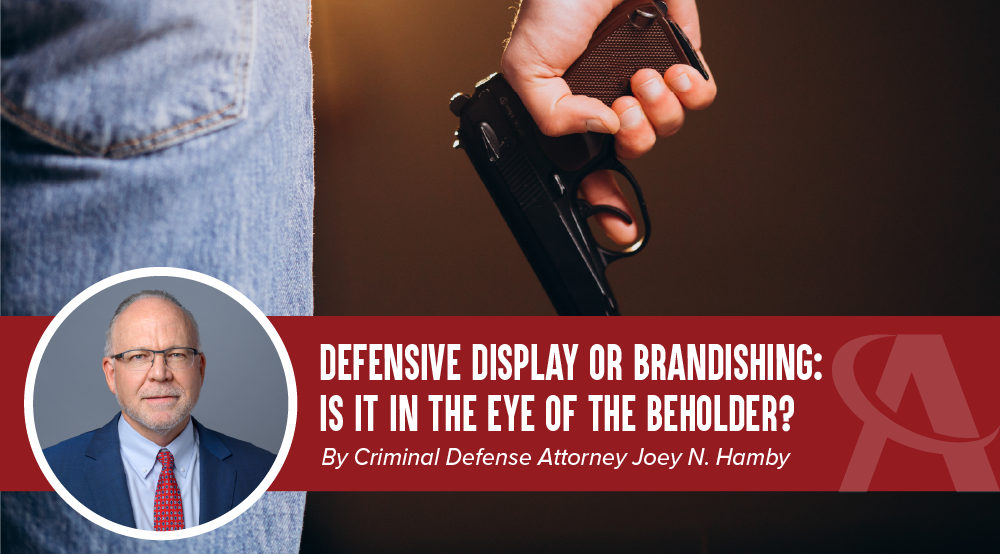
When it comes to defending yourself with a firearm, this may well be the most important article you can read. That sounds like a strong statement, but here is the reality, citizens in the United States shoot at attackers a relatively small number of times. They shoot and kill attackers in self-defense a tiny number of times on a national basis. But citizens display a firearm to stop an attack or a crime millions of times each year.
As defense attorneys, we are focused on giving advice about the most serious events our clients face. We prepare our clients for the worst-case scenario, that they might have had to shoot and kill an attacker.
That is absolutely critical information for the very small number of people involved in fatal self-defense shootings. But the reality is that the most likely scenario that you will face involves simply displaying a firearm to stop an attack, not discharging a firearm, and certainly not a fatal shooting.
As attorneys, we tend to focus heavily on the most serious but least likely scenario, while giving relatively little guidance on the most likely event in which you will use a firearm in self-defense, a defensive display.
The Difference Between Defensive Display and Brandishing
Shakespeare said that a rose by any other name would smell the same, no matter what we call it. On the other hand, Solomon said that beauty is in the eye of the beholder. These are two critical concepts when it comes to a citizen who displays a firearm. Is that display an act of self-defense, or is it an act of aggression against an innocent person?
Let’s define the terms. First, a firearm can be displayed in many different ways and situations. In this article, we will define “brandishing” as an inappropriate, even, unlawful display of a weapon, and “defensive display” as a lawful display of a weapon which could include pointing a firearm at someone, holding up a firearm to show that you have it, showing that you have a firearm on your hip, or just telling someone that you have a firearm.
The very word “brandishing” has a negative connotation. When you hear the word “brandishing,” you think of an out-of-control person waving a firearm around in a reckless manner. The term “defensive display” on the other hand, leads us to think of a person who is reasonably and justifiably showing an attacker that the person has a weapon, thereby preventing the attack.
The reality is that the same behavior could lead to criminal charges in one jurisdiction or a refusal to charge a case in another jurisdiction. As responsible owners of firearms, it is up to each of us to know what our jurisdiction has to say on this subject. It may also be up to us to actively lobby our jurisdiction for a change in the law where needed.
When Does Displaying a Firearm Become a Crime?
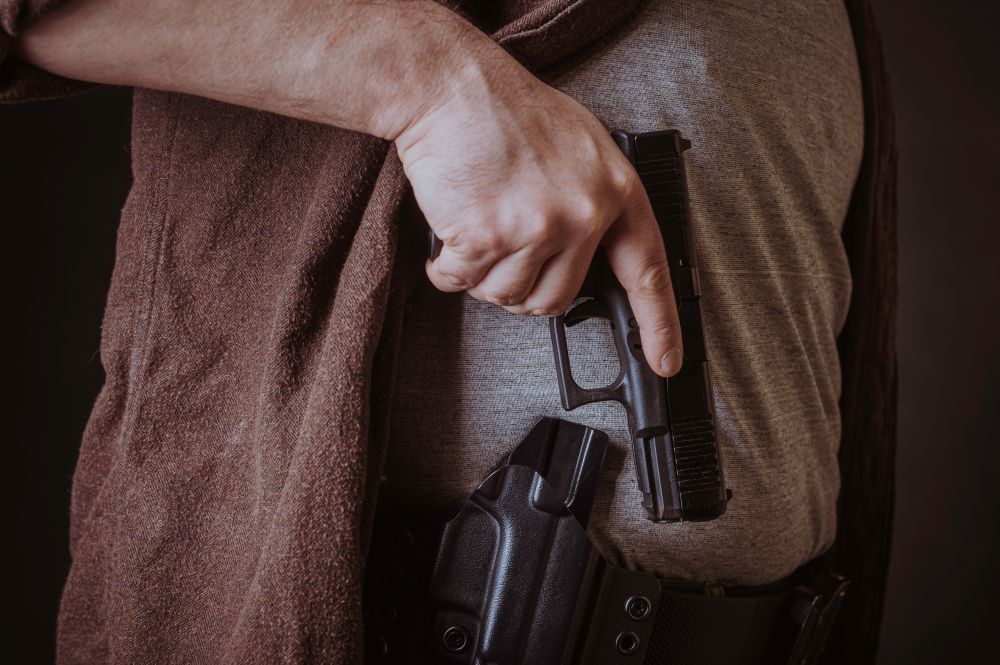
Now let’s talk about displaying a firearm. We know that there are many instances where a citizen displays a firearm and prevents a crime. We also know that people display firearms to help commit crimes.
The clearest example of criminal brandishing is an armed robber who shows a firearm, or even points it at a victim and demands money. A less clear example is when a person displays a firearm to end an argument.
These situations transition from clear criminal acts, to very questionable actions, to clear acts of self-defense, with just a few fact changes. In court, we are often concerned with fact-specific scenarios, as judges, prosecutors, police officers, and jurors, will all be swayed by changes in facts.
It is not possible to walk through every hypothetical and give clear answers on whether an act in the future will be justified or not, but there are some very clear principles to guide us.
Imminence: The Timing of the Threat
Imminence deals with the timing or immediacy of the threat.
If a threat is not an immediate threat, you will have significant problems convincing law enforcement or prosecutors that you had no choice but to use a firearm.
In other words, if someone threatens to harm you at some point in the future, you will have a problem justifying your immediate use of a firearm.
Put more specifically, if your worst enemy sends you a letter saying “I intend to kill you next year,” and in response you walk by his house waving a gun, you will likely not have a great self-defense claim.
Proportionality: Comparing Threat and Response
Proportionality compares the threat level with the response level. If the use of the firearm is disproportionate to the threat you are facing, you have a problem.
Many people assume that this means you can’t bring a gun to a knife fight, or a fist fight. That is not what proportionality means.
You can be killed or seriously injured by a knife or a fist, depending on the circumstances.
As an example of proportionality, if you are attacked and struck repeatedly by a person saying they will kill you, are you justified in shooting the person?
What if you are a 75-year-old woman in a wheelchair and your attacker is a heavily muscled 250-pound martial arts fighter?
What if you are a grown adult and the attacker is your out-of-control 5-year-old throwing a tantrum?
Proportionality is highly contextual, and attorneys can’t give you answers to every hypothetical. Just understand that if you can’t explain why your use of a firearm was proportionate to the threat, you have a problem.
Reasonableness: The Broader Context
Lastly, is your behavior reasonable in the circumstances? This applies to the imminence and proportionality issues but is much broader.
In some jurisdictions the issue of reasonableness includes a duty to retreat, while other jurisdictions have strong Stand Your Ground laws and strong Castle Doctrine laws.
In some settings reasonableness can include factors such as who started a confrontation, how many people are involved on one side or the other, and the positions of the parties.
These factors apply to defensive display just as they do to discharging a firearm. While the context may be slightly different, the analysis is the same: Imminence, Proportionality, and Reasonableness.
Common Scenarios: Road Rage and Disputes
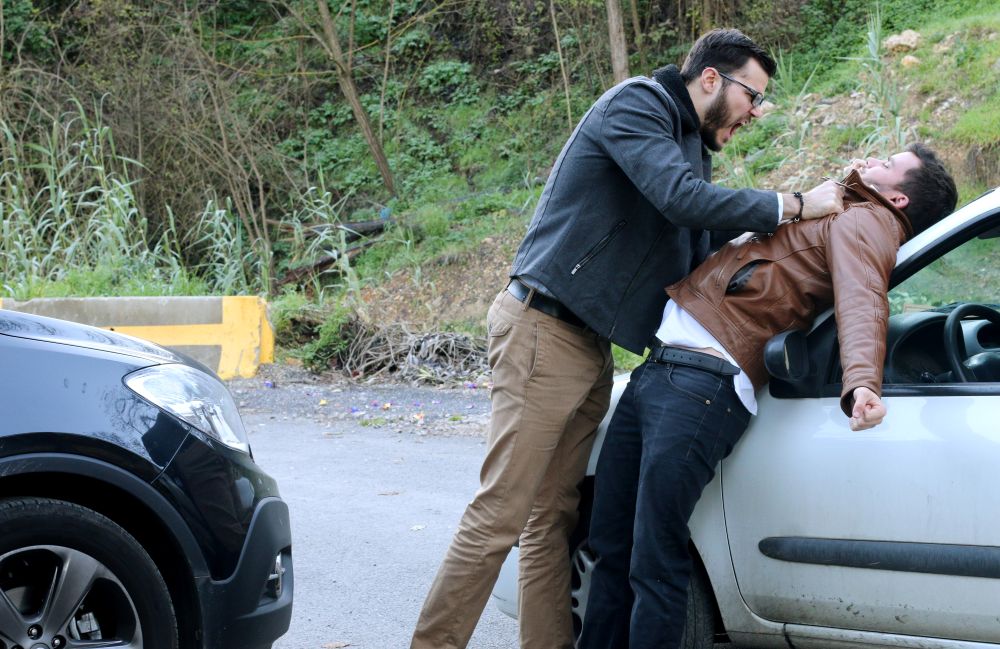
We frequently see allegations of brandishing a firearm in “road-rage” cases where one driver feels threatened and holds up a gun to get the other driver to back off.
We also often see cases where parties are involved in a dispute and one of them displays a firearm. In some cases, the firearm might be pointed at the other party or just shown to the other party.
As a side note, if you ever have to display a firearm to stop an attack, understand that the other party will almost always claim that you pointed the firearm at them and threatened to shoot them, even where you simply display the firearm without pointing it at anyone.
Is it so shocking that someone who is willing to attack another person would be willing to lie about the facts?
Training Misconceptions About Displaying a Firearm
Another issue is the training that is almost universal on the use of a firearm. I have heard numerous firearms instructors recite rules of firearm safety and leave their students with the perception that they cannot display a firearm or point it at another person unless they are going to shoot that person.
For the firearms instructors, please note that I did not say that you are saying those words, but, in an understandable effort to prevent accidental shootings, sometimes the information conveyed leaves students with the belief that they should never display a firearm unless they are going to pull the trigger.
I think some law-enforcement officers and prosecutors have that same impression.
The reality of defensive display is that it is a rational and reasonable tool to deter violence. Sometimes simply showing that you have a firearm can prevent an attack. Sometimes an attacker won’t stop unless a firearm is pointed at them. Sometimes an attacker just won’t stop, and you have to shoot, and possibly kill.
What To Do After a Self-Defense Incident
Just remember, if you are involved in any type of a self-defense incident, whether it involves discharging a firearm, displaying a firearm, or any other type of self-defense scenario, reach out to a criminal defense attorney as soon as possible.
If you are contacted by law-enforcement, immediately and politely tell the officer:
“I am not talking with you, I want my lawyer.”
Final Thoughts
You have a right to defend yourself and your loved ones in our great country. You can expect that when you exercise that right you will face scrutiny and possibly prosecution.
Once you defend yourself against a criminal attacker, you must expect to defend against attacks from the legal system.
Prepare for that. Plan for that. And don’t do it on your own. We are here to help you.



